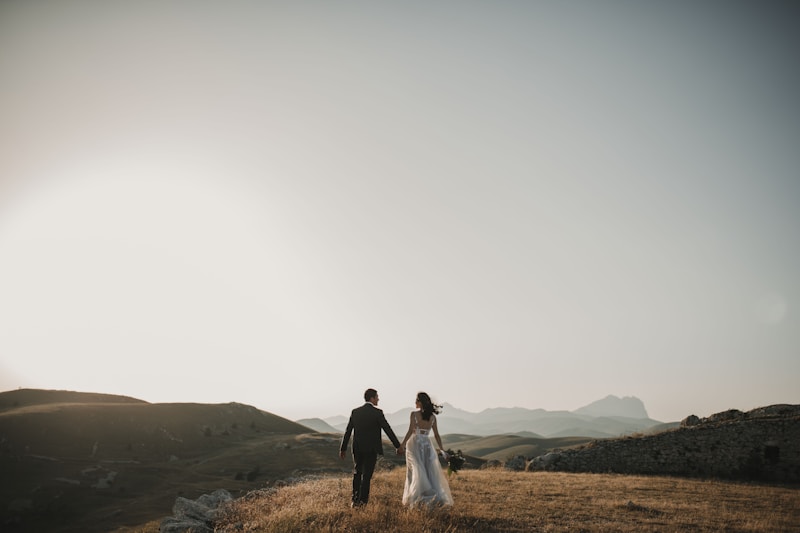Exploring the Ethnic Influence in Wedding Styles: A Cultural Journey
Understanding Ethnic Influence in Wedding Styles
Weddings are significant milestones in people's lives, celebrated with great fervor across the globe. Yet, the style and elements incorporated into these ceremonies can vary dramatically based on cultural backgrounds. This article delves into the ethnic influence in wedding styles, highlighting how various cultures shape the traditions that couples follow on their special day. From attire and ceremonies to rituals and decor, let's explore the unique aspects that define wedding styles around the world.
The Cultural Significance of Weddings
A wedding is more than just a legal contract; it is a profound cultural ritual that unites not only two individuals but also their families. Each culture has its unique practices and traditions, infused with beliefs, values, and history. For example, in Indian culture, weddings are elaborate affairs that can last several days and involve various ceremonies such as the Mehendi and Sangeet, which include music and dance. In contrast, traditional Western weddings may be characterized by a church service followed by a reception, highlighting the beauty of simplicity and elegance.
Key Elements of Ethnic Wedding Styles
| Wedding Element | European Influence | Indian Influence | African Influence |
| Attire | White gown, tuxedo | Lehenga, kurta | Colorful attire, traditional beads |
| Ceremony Length | 1 day | 3-5 days | Varies by tribe |
| Rituals | Vows, ring exchange | 7 pheras, sindoor | Symbiotic rituals with nature |
| Cuisine | Course meals, wedding cake | Buffet style, sweets | Local dishes, communal feasting |
Regional Inspirations
Different regions around the world have distinct traditions that significantly shape wedding styles. Understanding these regional inspirations can help couples incorporate rich cultural elements into their ceremonies.
North America
In North America, weddings often reflect a blend of various cultures, heavily influenced by both European and indigenous practices. The common thread is often a ceremony held in a religious or scenic venue, followed by a reception filled with music and dancing. However, there is a growing trend towards more personalized ceremonies that integrate non-traditional elements, such as themed weddings or outdoor settings.
Asia
Asian weddings are known for their vivid colors and intricate ceremonies. Countries like India, China, and Japan carry deep cultural significance in their wedding practices. For instance, in Chinese weddings, the color red symbolizes good fortune and joy, leading to the predominance of red attire and decor. In contrast, Japanese Shinto weddings often highlight simplicity, with brides wearing traditional white kimonos for purification.
Africa
African weddings are often lively celebrations filled with music, dance, and vibrant colors that reflect the couple's heritage. In many cultures, communal feasting is a vital part of the celebration, underscoring the importance of family and community. Each tribe has its distinct rituals; for example, in Zulu culture, the bride's family may perform a series of traditional dances to welcome the groom's family.
Europe
European weddings often vary from one country to another. In France, the ceremony may take place in a vineyard, while in Italy, it could be held in a historic villa. Historically, many European weddings were steeped in religious traditions; however, modern ceremonies have become more secular, focusing on personal expression and romantic themes.
Incorporating Ethnic Influences into Modern weddings
Couples today are increasingly looking to incorporate various ethnic influences into their weddings to reflect their backgrounds and values. Here are some ideas to consider:
- Attire: Couples can blend traditional attire with modern styles. For instance, a bride might choose a white wedding dress with traditional embroidery elements from her heritage.
- Ceremony: Incorporate rituals from both families. This coupled approach can mean integrating cultural readings, prayers, or special symbols during the ceremony.
- Decor: Choose wedding decor that reflects cultural significance. For example, use colors associated with good fortune from specific cultures or symbols that represent love and unity.
- Cuisine: Design your menu to include traditional dishes from both family backgrounds, allowing guests to experience a fusion of flavors.
- Music: Create a playlist that represents both cultures, integrating traditional music along with modern beats to keep everyone dancing.
Conclusion
Understanding ethnic influence in wedding styles opens the door to a rich tapestry of traditions that celebrate love and culture. Couples can draw inspiration from their ethnic backgrounds to personalize their wedding ceremonies, ensuring that their special day reflects their values and heritage. Remember, a wedding is not just about the ceremony; it is a celebration of love that intertwines with the stories of your families and cultures.
Moreover, exploring ethnic influences in wedding styles promotes an appreciation for diversity and enables couples to honor their roots while creating new memories. As you plan your wedding, consider how you can weave these traditions into your story, making it truly unique to you both. Take time to research and discuss with family members, as their insights may lead you to include elements that hold deep personal significance.
